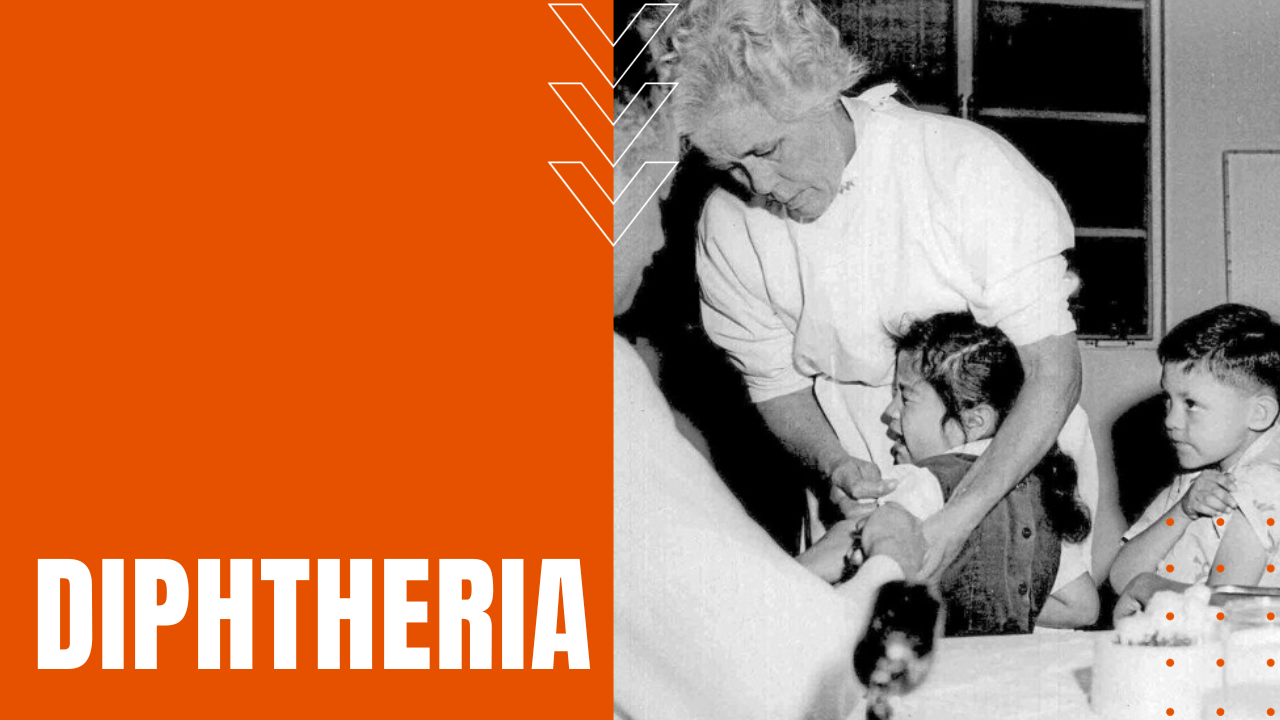Diphtheria

During an outbreak of diphtheria in 1735 Colonial America, known as “The Plague Among Children,” word master, Noah Webster, failed to catalog a name for the dreaded childhood disease. Known as “throat distemper,” diphtheria remained nameless until 1821, when French physician Pierre Bretonneau coined the name diphterite, based on the Greek word diphthera, which translates to leather or hide. Characterized by severe throat pain, fever and fatigue, difficulty breathing and swallowing, and in severe cases when its causal bacteria, Corynebacterium diphtheriae, enters a victims bloodstream, nerve, kidney and heart problems can result.
Multiple Types
A second and less frequent variety of diphtheria, known as Cutaneous diphtheria, causes skin rashes, sores and blisters, anywhere on the human body. Throughout the 18th and 19th centuries, diphtheria was the leading cause of death in children the world over, challenging physicians as young patients rich and poor alike suffered and frequently died from the disease, including Queen Victoria’s husband and daughter, Prince Albert and Princess Alice.
First Isolated
Employing Koch’s Postulate in his study of the disease, in 1883, Prussian pathologist Edwin Klebs isolated a bacterium from the leathery throat tissues of a child suffering from the disease, while a year later, German bacteriologist Friedrich Loeffler isolated what became known as the Klebs-Loeffler bacillus, later renamed Corynebacterium diphtheriae. While Antitoxin and Serum Therapy became widely used by 1890, in 1901, thirteen St. Louis children died from antiserum contamination, prompting Ernst Lederle to produce an antiserum of high quality assurance in 1906, followed by William Park’s vaccine breakthrough in 1914 that produced immunity first in animal studies and then in humans.
A Lethal Outbreak
After an outbreak of diphtheria struck 206,000 American children in 1921—causing 15,520 deaths—vaccine makers began producing a combined diphtheria, tetanus and pertussis vaccine known as DTP, which then kicked off an American vaccination campaign in the 1930s. Today, diphtheria remains a disease of the past in much of the world—the CDC reporting just six cases in the United States in 2000—while in 2017, that same body reported 8,800 worldwide cases in unvaccinated or un-boosted patients, making diphtheria, one of the deadliest killers of man, before the age of modern science.
